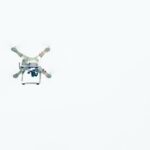Decoding ICEFLAGS: Your Guide to Conquering Flight Illusions
Spatial disorientation, a pilot’s insidious foe, can make even the most experienced aviator question their senses. It’s the unsettling feeling of being lost even when you’re not, magnified a thousandfold in the cockpit. Thankfully, there’s ICEFLAGS, a mnemonic device and a pilot’s essential tool for understanding and preventing these potentially dangerous illusions. Let’s explore each illusion, its potential impact, and how to maintain control. [https://www.lolaapp.com/goldilocks-and-the-three-bears-pdf] provides a lighthearted analogy of how easily one can become disoriented, though in far less dire circumstances.
ICEFLAGS Explained: Eight Illusions That Can Threaten Pilots
ICEFLAGS is an acronym representing eight common sensory illusions:
I – Inversion Illusion: Recovering from a dive can trigger a false sensation of being upside down, as if your brain hasn’t caught up with the change in aircraft attitude.
C – Coriolis Illusion: A quick head movement during a constant-rate turn (which happens frequently in flight, even if subtly) can create a powerful and disorienting sensation of tumbling or spinning along an entirely different axis than reality suggests. https://www.lolaapp.com/What is the Coriolis Illusion?
E – Elevator Illusion: Sudden updrafts can feel like a climb, prompting a pilot to push the nose down. Conversely, a downdraft mimics a descent, inducing a potentially dangerous pull-up.
F – False Horizon: Clouds, sloping terrain, or city lights at night can masquerade as the horizon, leading to disorientation and incorrect aircraft attitude.
L – Leans: After leveling off from a prolonged turn, a pilot might still feel the bank, leading them to unconsciously lean in the direction of the prior turn and re-enter the bank.
A – Autokinesis: Staring at a single light in darkness can make it appear to move, causing pilots to misjudge the position of other aircraft or celestial bodies.
G – Graveyard Spiral: Arguably the most perilous, this occurs when a pilot enters a prolonged, unnoticed turn often coupled with a descent. The inner ear adapts to the turning sensation, so leveling the wings creates a false feeling of turning in the opposite direction, often leading to tightening the spiral and a potential crash.
S – Somatogravic Illusion: Rapid acceleration creates the illusion of pitching up, while deceleration mimics pitching down. This can lead to inappropriate control inputs, especially during takeoff and landing. https://www.lolaapp.com/What does somatogravic mean?
Countering Illusions: Strategies for Maintaining Control
Combating these illusions requires discipline and training:
Trust Your Instruments: When senses and instruments disagree, trust the instruments. Regular instrument training and practice scenarios build this essential skill.
Minimize Head Movements: Avoid abrupt head movements, especially during turns. Smooth, deliberate movements reduce the likelihood of triggering illusions like the Coriolis illusion.
Prioritize Rest: Fatigue amplifies susceptibility to disorientation. A well-rested pilot is a safer pilot.
Effective Scanning Techniques: Don’t fixate on one instrument. Regular scanning provides comprehensive awareness of aircraft attitude and performance.
Acknowledge Your Limits: Night flying and adverse weather increase the risk of spatial disorientation. Avoid these conditions, especially when less experienced.
Regular Training and Practice: Simulators offer safe environments to experience and manage illusions, building valuable recognition and response skills.
The Science of Spatial Disorientation: Ongoing Research
Research continues to explore the complexities of spatial disorientation, potentially leading to more effective countermeasures. Some experts believe virtual reality training could significantly improve a pilot’s ability to recognize and respond to these illusions. Ongoing cockpit design and instrumentation improvements also aim to minimize the likelihood of these illusions occurring.
While our understanding of the inner ear and brain’s sensory interpretation during flight is constantly evolving, there’s still much to learn. Ongoing research suggests that factors like individual differences in sensory processing might play a significant role. By continually researching and educating ourselves about these phenomena, we can enhance flight safety.
What are ICEFLAGS in Aviation?
ICEFLAGS, a critical mnemonic in aviation training, equips pilots to combat the dangers of spatial disorientation—the disconnection between perceived and actual aircraft orientation. It represents eight common sensory illusions, each capable of leading to disastrous consequences if not recognized and addressed. https://www.lolaapp.com/What are iceflags in aviation? – iceflags provides a comprehensive overview of this crucial concept.
What is the Coriolis Illusion?
Imagine the world spinning around you after a simple head movement in flight. This is likely the Coriolis illusion, a form of spatial disorientation affecting pilots and passengers. It arises from the complex interaction between your inner ear’s fluid-filled semicircular canals (your body’s gyroscopes) and your brain’s interpretation of movement. During a turn, even a slight one, your body rotates with the aircraft. A head movement introduces a new axis of rotation, confusing the brain and creating a false sensation of spinning or tilting. https://www.lolaapp.com/What is the coriolis illusion? – iceflags offers a more detailed explanation of this fascinating and potentially dangerous illusion.
What does somatogravic mean?
Somatogravic illusions, another form of spatial disorientation, involve misinterpreting linear acceleration as changes in pitch. During rapid acceleration, you might feel like pitching up, while deceleration can feel like pitching down. This occurs because the otolith organs in your inner ear, responsible for sensing linear acceleration, are tricked, especially in situations with limited visibility. Without visual cues, your brain might interpret the acceleration as a change in pitch. https://www.lolaapp.com/What does somatogravic mean? – iceflags provides further insight into this phenomenon.
- Discover Long Black Pepper: Flavor & Health Benefits - April 25, 2025
- Shocking Twists: The Grownup Review: Unreliable Narration - April 25, 2025
- A Quiet Place Book vs Movie: A Deep Dive - April 25, 2025

















1 thought on “ICEFLAGS Decoded: Understanding and Preventing Spatial Disorientation in Flight”
Comments are closed.